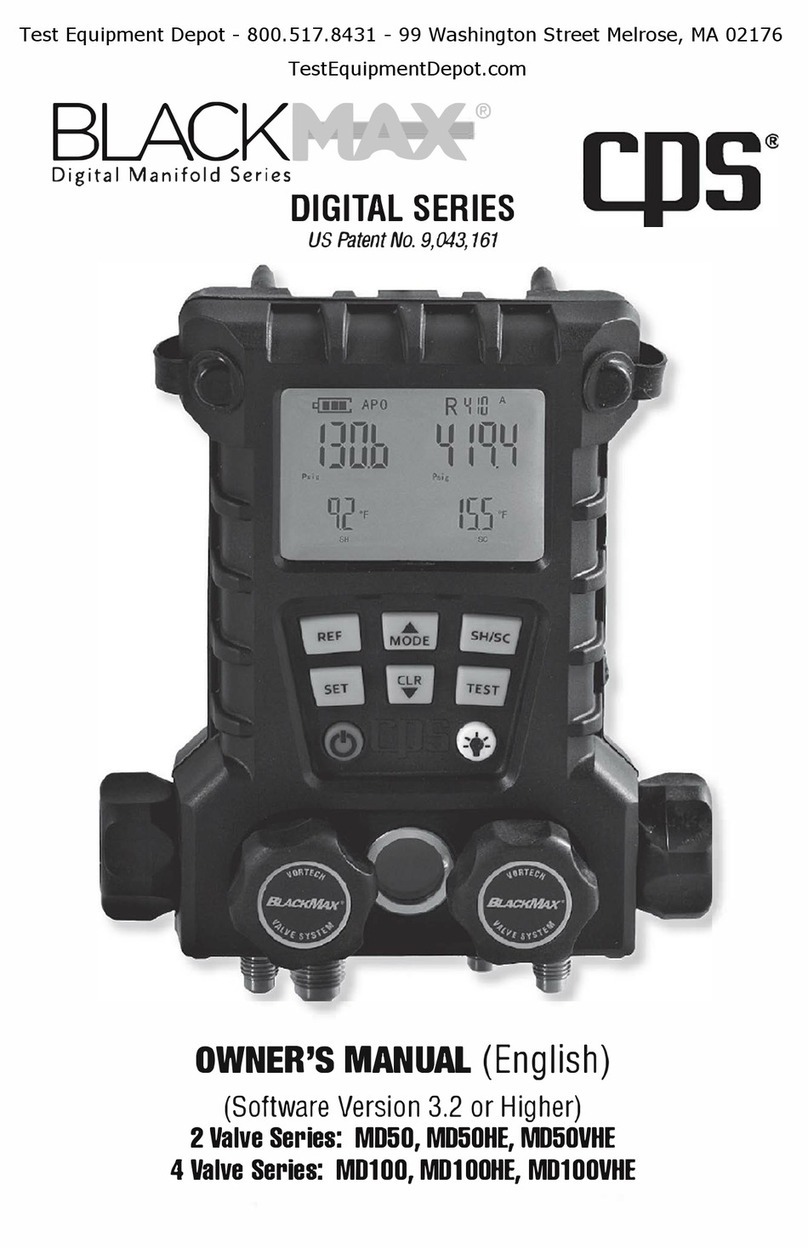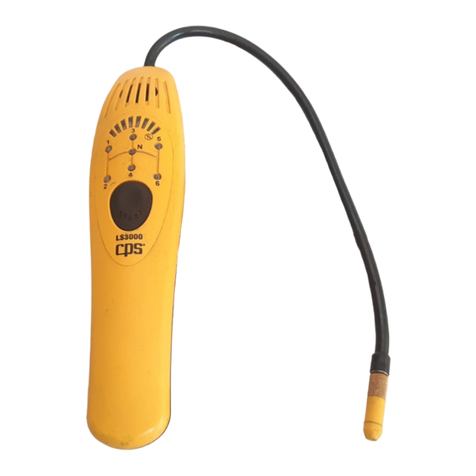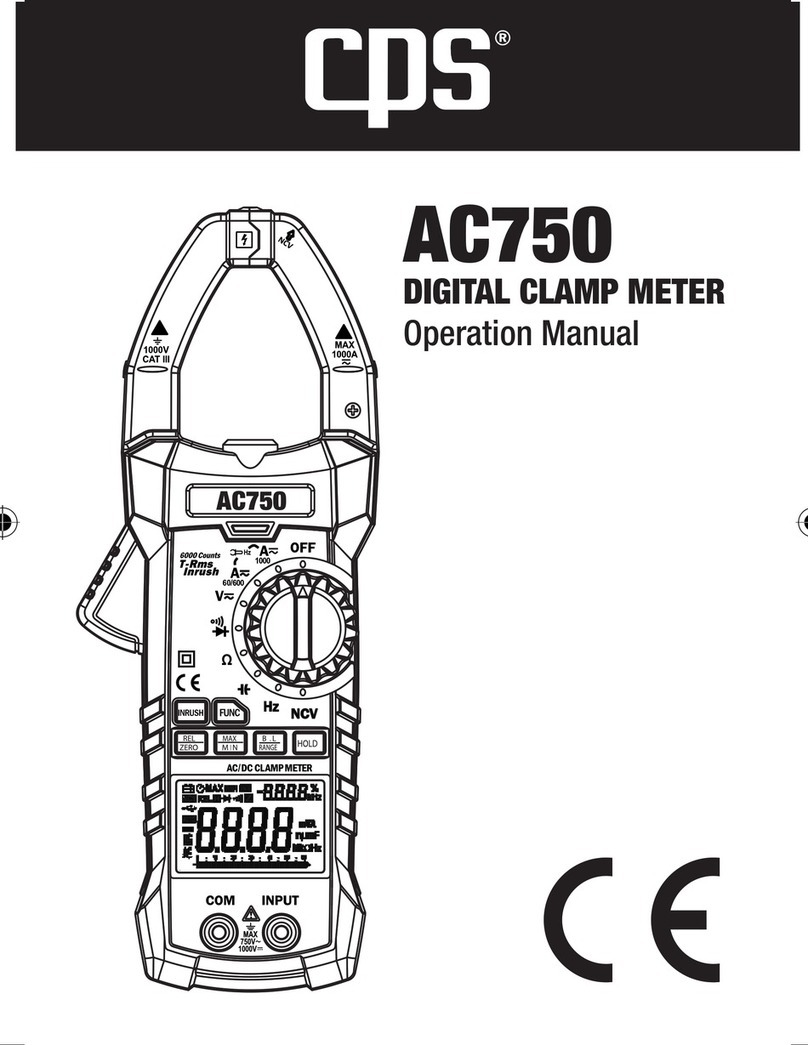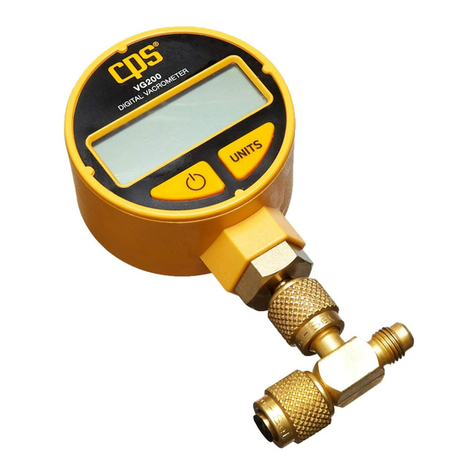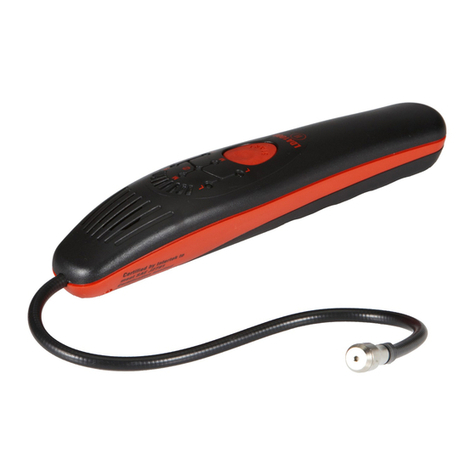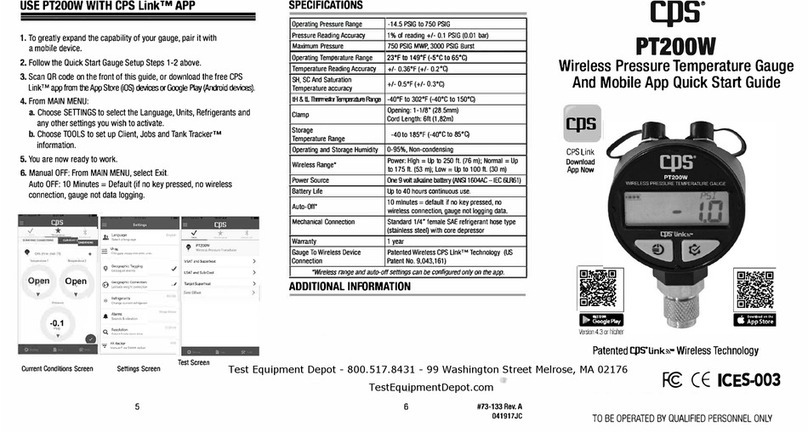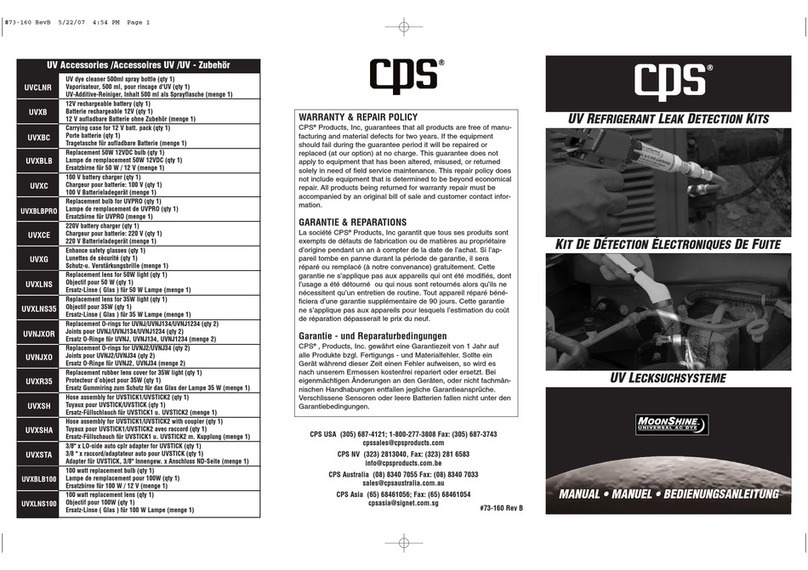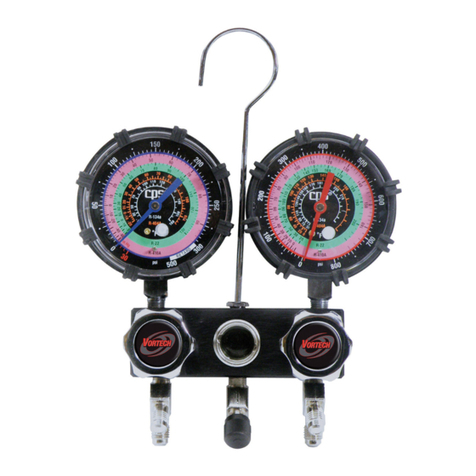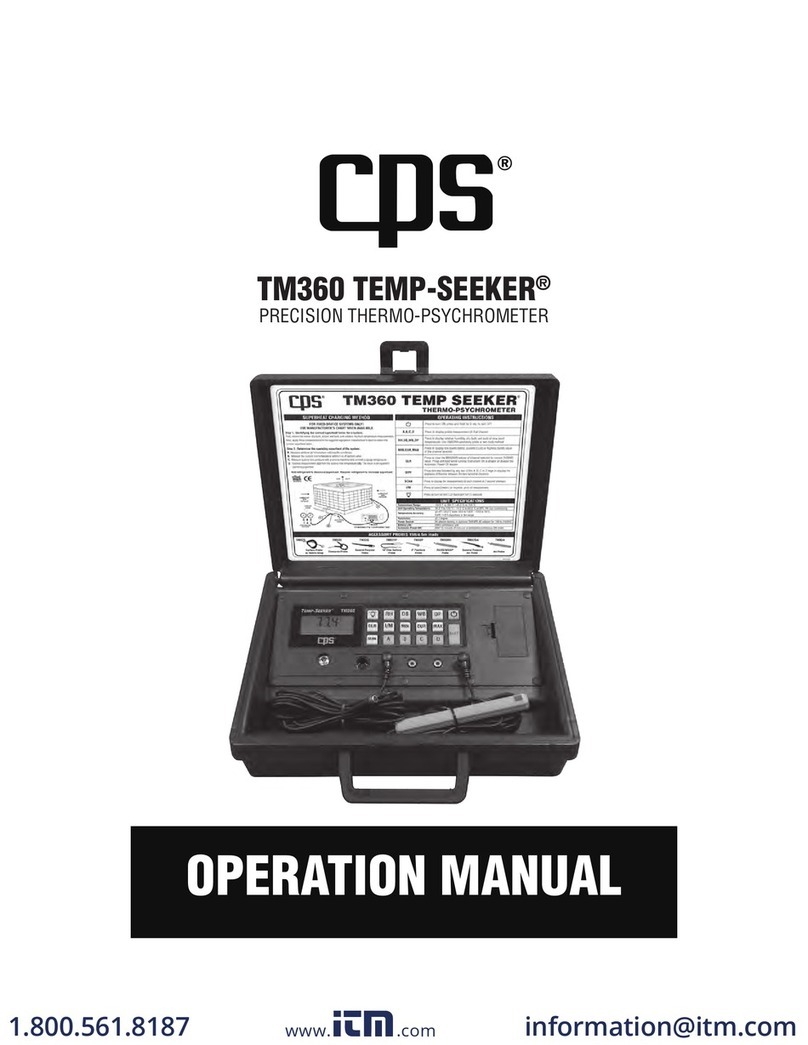
8
where the audible alarm might be dicult to hear. Vibraon frequency
increases as gas concentraons increase.
3. “PPM SPEEDOMETER” (ON THE DISPLAY)
At the top of the LCD display, there is an innovave analog “speedometer”
display. If no gas is detected, only a “0” will appear at the top LEFT of the
speedometer. But, if gas is detected, the speedometer will “sweep” to
the right to reect the PPM level being detected. This speedometer
scale helps technicians (in their peripheral vision) to monitor the “rate
of gas concentraon change” as they move closer to, or further away
from the source of a leak.
4. “PPM” NUMERICAL DATA ON THE DISPLAY
When the LSCG detects a combusble gas (having a Methane com-
ponent), it generates numerical “PPM” (“Parts Per Million”) values
of Methane on the LCD display. A key benet of this innovave digital
display is that it gives HVAC/R technicians specic, real me, combus-
ble gas concentraon values. Therefore, technicians don’t need to
remember what mulple LEDS represent as is commonly required
on compeve analog leak detectors.
5. “LEL %” NUMERICAL DATA ON THE DISPLAY
For any gas (with a Methane component) detected, the LSCG
will also show an “LEL” or “Lower Explosion Limit” value as a
percent volume. This reading lets technicians know if the gas
being detected is close to, or well away from the point at which
it might combust. More detailed information on LEL can be
found on pages 13-14.
6. INCLUDED ITEMS
• LSCG Combusble Gas Leak Detector
• Gas Sensor (Replaceable)
• 5V/1A 2 Prong AC Plug with USB Port
• ‘78” (2m) USB cord
• Quick Start Guide (full manual available at www.cpsproducts.com)
7. COMBUSTIBLE GASES (HAVING A METHANE
COMPONENT) DETECTED BY THE LSCG
Natural Gas (4): Methane, Ethane, Propane, Butane. Other Gases (26):
Ammonia, Acetaldehyde (Ethanal), Acetylene, Acetone, Benzene, Carbon
Dioxide, Denatured Alcohol, Ethanol, Ethylene, Formaldehyde, Gasoline,
